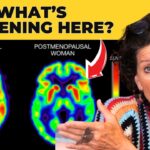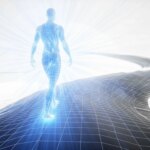Summary of Researchers Solve 25-Year Crohn’s Disease Mystery:
Researchers at UC San Diego have resolved a long-standing debate about the role of the NOD2 gene, linked to Crohn’s disease, which increases the risk of developing this autoimmune condition. They discovered that the human gut relies on two types of macrophages: inflammatory macrophages that combat pathogens, and non-inflammatory macrophages that aid tissue healing. An imbalance in these cells contributes to Crohn’s disease symptoms.
Using artificial intelligence and molecular biology, the team identified a gene signature of 53 genes that distinguish between these two macrophage types. They found that a protein called girdin, regulated by NOD2, helps maintain this balance. The absence of girdin due to specific NOD2 mutations leads to improper immune responses and severe inflammation.
Their findings were corroborated in mouse models lacking girdin, which exhibited imbalances in gut bacteria and increased inflammation. This research sheds light on the genetic mechanisms behind Crohn’s disease and may lead to new treatment approaches that restore the relationship between NOD2 and girdin.
*****
Summary Points
- Revolutionary Research: Researchers at UC San Diego have finally resolved a 25-year mystery surrounding Crohn’s disease by understanding the role of the NOD2 gene and its interaction with macrophages.
- Gene Interaction: The key discovery revolves around the relationship between the NOD2 gene and a protein called girdin, highlighting the importance of macrophages in gut health.
- AI and Molecular Biology: This groundbreaking study employed artificial intelligence to analyze gene expression, enabling a nuanced understanding of immune response in the gut.
- Implications for Treatment: The findings may pave the way for new therapies aimed at restoring the balance between inflammatory and healing responses in intestinal tissues.
- Animal Models: The research also confirmed its findings through experiments on mouse models, thus reinforcing the insights gained through human tissue studies.
Understanding the Crohn’s Disease Conundrum
In a world where medical mysteries abound, few are as perplexing and distressing as Crohn’s disease. This chronic inflammatory bowel disease has plagued patients for decades, characterized by painful symptoms, severe digestive issues, and, often, an overwhelming sense of despair. Finally, after 25 years of speculation and study, researchers at UC San Diego have shed light on one of the most critical aspects of this disease by unraveling the interaction between a significant gene, NOD2, and immune cells known as macrophages.
Let’s delve into this fascinating discovery and see what it means for not only our understanding of Crohn’s disease but also for the future of medical science.
The Immune System’s Policing Agents
Before we immerse ourselves in the details, it’s essential to understand the role of macrophages in our immune system. Imagine them as the vigilant soldiers stationed in your gut, constantly on the lookout for invaders. There are two main types of macrophages:
- Inflammatory Macrophages: These are the fighters, fiercely combating harmful pathogens like bacteria and viruses.
- Non-inflammatorily Macrophages: Their role is more of restoration, existing to heal and repair damaged tissues.
For a healthy gut to function optimally, a balance between these two types of macrophages is essential. Unfortunately, in patients with Crohn’s disease, this balance is disrupted, leading to relentless inflammation that can wreak havoc on the digestive system.
The NOD2 Gene: A Genetic Watchdog
The NOD2 gene has been at the center of discussions regarding Crohn’s disease since it was first identified in 2001 as a genetic risk factor. Essentially, it serves as a surveillance system, alerting the immune system when it encounters harmful pathogens. Nevertheless, the relationship between NOD2 and macrophage function has remained unclear—until now.
Researchers combined cutting-edge artificial intelligence with advanced molecular biology techniques to analyze thousands of gene expression profiles in colon tissues affected by inflammatory bowel disease (IBD). Their meticulous study led to the identification of a specific macrophage gene signature: a collection of 53 genes that distinguishes between inflammatory and healing macrophages.
One standout gene in this ensemble is girdin. Not only does it play a pivotal role in macrophage functionality, but it also binds with NOD2 to create a protective shield against runaway inflammation.
A Break in the Chain
Unfortunately, the most common mutation in the NOD2 gene causes a deletion that eliminates the binding site for girdin. This rupture leads to a tragic imbalance between inflammatory and non-inflammatory macrophages. The results? A perfect storm for relentless inflammation and tissue damage in patients suffering from Crohn’s disease.
Dr. Pradipta Ghosh, a senior author of the study, emphasized the vital collaboration between NOD2 and girdin: “When bound to girdin, it detects invading pathogens and maintains gut immune balance by swiftly neutralizing them. Without this partnership, the NOD2 surveillance system collapses.” Essentially, without girdin, the immune system’s ability to keep harmful microbes at bay frays, echoing through the gut and resulting in catastrophic consequences.
Confirming the Discovery Through Animal Models
To solidify these findings, the researchers examined mouse models of Crohn’s disease, comparing those missing the girdin protein with those that had it intact. The outcomes were nothing short of alarming for the mice lacking girdin. Not only did they suffer severe gut imbalances, but they also developed inflammation in the small intestine, leading to life-threatening conditions like sepsis. These results were a resounding validation of the researchers’ earlier findings.
In Dr. Ghosh’s poignant words, “The gut is a battlefield, and macrophages are the peacekeepers.” This analogy paints a vivid picture of the unseen struggles within our bodies, emphasizing the importance of maintaining balance for optimal health.
A Beacon of Hope
While this groundbreaking research elucidates a specific genetic mutation’s role in Crohn’s disease, the implications extend far beyond mere understanding. The exciting intersection of AI, molecular biology, and genetic research opens new avenues for treatment. Future therapies may focus on restoring the crucial relationship between NOD2 and girdin, offering hope to millions who grapple with the uncertainties of Crohn’s disease.
Imagine a world where patients can find relief from the debilitating symptoms that plague their everyday lives. Picture a therapeutic approach tailored to restore inner balance, enhancing the natural healing processes within the gut. These ideas no longer reside in the realm of science fiction; they are within reach, thanks to the innovative minds dedicated to uncovering the mysteries of human health.
The Role of AI in Medical Exploration
The use of artificial intelligence in this research also emphasizes how modern technology can push the boundaries of understanding. By analyzing vast amounts of biological data, AI can reveal hidden patterns that escaped the human eye. This capability could revolutionize medical research across disciplines, propelling us into an era where conditions that were once shrouded in mystery are fully elucidated.
What happens when we harness the combined power of technology and biology? New treatment paradigms emerge, offering not just reactive solutions but proactive strategies to maintain health.
The Takeaway
As we strive to grapple with both personal and global challenges in life, the study of Crohn’s disease serves as an inspiring reminder of the persistent quest for understanding and improvement. It beckons individuals to remain hopeful, regardless of obstacles. Science has the potential to uncover solutions—even for those challenges that seem insurmountable.
Beyond this specific case, we can draw universal lessons from this research:
- Persistence Pays Off: The journey to solve complex problems often takes years of rigorous inquiry. The dedication of scientists exemplifies the value of persistence in any endeavor.
- Embrace Technology: Leveraging tools like AI can unlock new solutions in any field—be it health, business, or personal development.
- Balance is Key: Just as the gut requires a balance of macrophages, our lives demand equilibrium in various aspects—from work and play to health and well-being.
- Knowledge is Empowering: Understanding the mechanisms behind diseases equips both patients and healthcare providers with tools to make informed decisions about treatment and self-care.
The Future Awaits
As the researchers continue their work, the tapestry of knowledge surrounding Crohn’s disease will only expand. This breakthrough inspires hope and promises significant advancements in treatment options, ushering in a new era where lives can be lived fully, free from the shadows of autoimmune diseases.
In closing, the world is continuously evolving, driven by curiosity and the pursuit of knowledge. Whether in the medical field or our personal lives, the endeavor to understand ourselves better, improve our health, and balance our journeys remains fundamental. And who knows? Perhaps next time, it will be your quest that breaks new ground.


